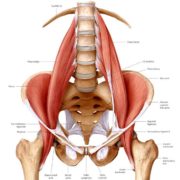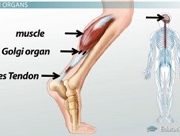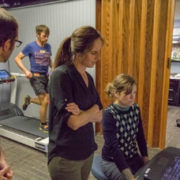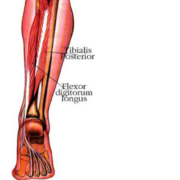 True: Aging impacts my health and fitness. False: Maintaining fitness is not possible since I am over 40 or 50 or 60 or 70 years old. A September 2018 article in Readers Digest listed 13 exercises one should avoid if he or she is 50 years old. Yes, this caught my attention as I endorse every one of the 13 exercises if done correctly. While I do not consider Readers Digest as a credible source for exercise and fitness news, I will list the 13 exercises, all of which have benefits if done correctly:
True: Aging impacts my health and fitness. False: Maintaining fitness is not possible since I am over 40 or 50 or 60 or 70 years old. A September 2018 article in Readers Digest listed 13 exercises one should avoid if he or she is 50 years old. Yes, this caught my attention as I endorse every one of the 13 exercises if done correctly. While I do not consider Readers Digest as a credible source for exercise and fitness news, I will list the 13 exercises, all of which have benefits if done correctly:1.Running Stairs
2.Spin Classes
3.High Intensity Interval Training
4.Hot Yoga
5.Push-ups
6.Squats with Weight
7.Bench Press
8.Burpees
9.Pull-ups
10.Crunches
11.Dead Lifts
12.Jumping Lunges
13.Sprints
The degree to which fitness is impacted by aging is based on physiology, genetics, medical history, exercise choices, and lifestyle choices. The largest factor influencing fitness as one ages (insert your definition of what “aging” represents), however, is lifestyle choices.Physiological changes associated with aging include a change in cardiac function (i.e. Max heart rate, cardiac output), a decrease in lean muscle mass, a decrease in strength, a
decrease in flexibility, a decrease in connective tissue elasticity, and a decrease in bone density. Genetics also plays a large role in the physiological cards we are dealt at an early age. Joint stiffness in the spine may be virtually absent to some, while others may develop a more limiting genetic form of spinal degeneration such as ankylosing spondylitis (HLA-B27). 1 Prior medical history and orthopedic injuries (joint and ligament injuries, fracture history, overuse injury history, bone density baseline) should guide the degree of impact your body will tolerate during exercise. But what about the factors each and every one of us can influence regardless of our genetics? How is one to sort through the conflicting information available on the subject of fitness and aging? Understanding your present fitness, fitness goals, and recognizing your past and present medical issues will guide lifestyle fitness choices to allow you to maintain fitness for years to come.
As a physical therapist and an endurance athlete, I view proper exercise as the most effective way to positively influence fitness with age. I quantify this statement with the words proper exercise because many factors determine how well your body will respond to certain exercises. Running is a relatively high impact form of exercise. If done correctly (efficiently and following a consistent, gradual training program), however, running may be tolerated well into one’s 60s and 70s. Exercise consistency is crucial for life-long fitness. Regular exercise (3 days per week minimum with 5 days per week preferred) must address the areas of fitness most impacted by age. Strength training must be included as physiology has shown a decrease in lean muscle mass and strength naturally occurring with age. Speed must be included as our fast twitch (speed) muscle fibers are replaced by slow twitch (endurance)muscle fibers with age. Flexibility training must be included to promote joint health and reduce osteoarthritis, and cardiovascular exercise must be included for circulatory health and to maintain a healthy body weight. To reduce joint-related pain, minimize impact loading and vary your workout routine accordingly.
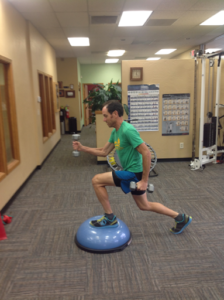 So what is the magic exercise? What is the key to fitness with age? Where do I buy the DVD or infomercial product to give me life-long fitness? No single exercise exists which combines all of these necessary components into one activity. Training, therefore, begins with finding an exercise form you enjoy (i.e. running, cycling, swimming, skiing). The next step is to develop a functional strength training program (with the help of a qualified physical therapist or trainer) aimed at improving your power and efficiency. Add to your
So what is the magic exercise? What is the key to fitness with age? Where do I buy the DVD or infomercial product to give me life-long fitness? No single exercise exists which combines all of these necessary components into one activity. Training, therefore, begins with finding an exercise form you enjoy (i.e. running, cycling, swimming, skiing). The next step is to develop a functional strength training program (with the help of a qualified physical therapist or trainer) aimed at improving your power and efficiency. Add to yourstrengthening program a dynamic stretching program to insure healthy joint motion and mobility. Mix up your workouts to decrease the adaptation effect created in the body when you run the same 4-mile loop every day. Finally, have an annual physical to make sure your heart is healthy, your blood levels are within normal limits, and your cholesterol and blood pressure are normal.
Fitness beyond the 20s and 30s has many faces. From the person who has just been told by their physician to lose weight and reduce their blood pressure to the 60-year old athlete who defies both years and gravity, fitness in the second half of life does not have to be elusive. Life
experiences, life choices, environmental factors, genetics, and dedication to health and fitness all impact our fitness later in life. Call Sapphire PT to find out more about how you can realistically attain your fitness goals at any age.
1 Brown MA et al. Clin Exp Rheumatology; 2002. 20: S43-S49.



